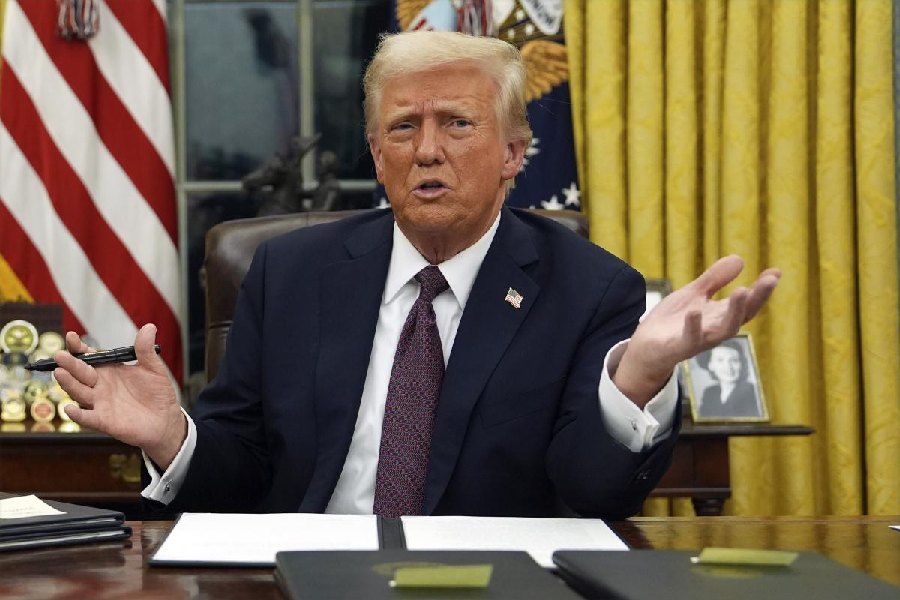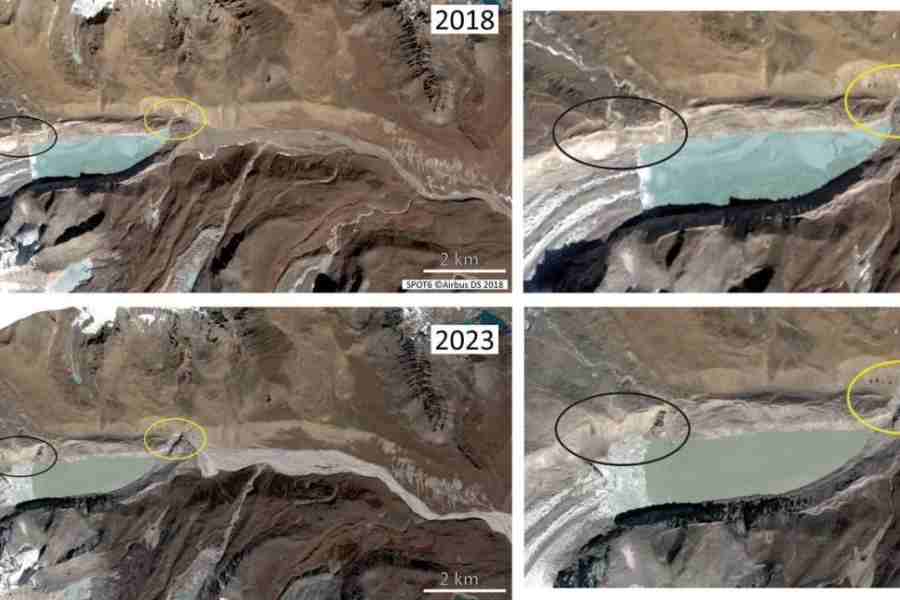The sheer variety of media chosen by the young artists whose works were displayed at Svikriti 2023, Birla Academy of Art and Culture’s show of the latest award winners of its Annual Exhibition, was proof that artistic innovation is thriving in India. There was also an awareness of the crises facing the world at the moment.
Debi Prasad Bhunia’s sculptures, for instance, revealed a disjunct between man-made urban structures and natural growth. Metal scaffoldings — at times in recognisable shapes, like that of a house — were overgrown with organic elements sculpted from marble. The solid and shiny texture of marble had been hewn away till it resembled fluid, pulsating masses like seaweed and corals that refused to be bound or contained by the scaffoldings. His sandstone sculptures of labourers were both poignant and intricate.
Intricacy is what made the works of Nutan Kishor Nishad fascinating as well. The fine etchings on his woodcut blocks and prints — these were hung opposite each other in an excellent display of the process and the product — told a grim tale of the state of the nation today and the strife that threatens to tear it apart. Particularly moving was There Is Winter in My Heart (picture, right), which depicted a young Muslim girl in a hijab with her eyes shut — is she oblivious to the dangers that surround her or has she shut her eyes out of fear? His Aesthetic of a Death Wish in aquatint intaglio — a work of great finesse given the darkness of its tones — was divided into two parts; the top half had an open sarcophagus and the bottom half had a king — is it Bhishma? — on the battlefield contemplating death.
Death also loomed large over the works of Anirban Basu, but his concern was primarily about the dying city and its decaying architecture. Street photographs showed a dingy Calcutta overflowing with filth, abandoned cars, dirty walls, broken mannequins, rotting kathamos of old idols — images that have been overused to the point of becoming cliches to highlight the deterioration of the city. What I Saw When I Died was striking, though, for it combined a mummy wrapped in metal strips and photographs of the insides of an old mansion, parts of which had fallen into disuse but other parts were clearly lived in until recently and were still not used to the absence of its resident.
Supriyo Karmakar’s contemplation on fabrics as well as his Analytical Survey of Human Attire was unique. He managed to capture the tactile aspect of fabric perfectly with his fine lines defining the warp and the weft. Another work, a bioscope of the Last Supper, where the lavishness of that feast merged into a line of beggars being served gruel, was skilfully executed. However, his works were repetitive, harping on the same things time and again.
Umesh Jana’s urban landscapes were painted entirely in rusty shades of brown and brick red and evoked an apocalyptic world of warplanes, skeletons, dying plants, and snapped communication wires. The human thumbprints left over all these images made it easy to discern the culprits of these crime scenes. He uses the varying opacities of acrylic, charcoal and ink to add depth and chiaroscuro to his works to great effect. Such skilled use of media is also evident in the painted works of Debojit Roy when he uses oil pastel and acrylic blocking on paper to create blueprints of intricate and elaborate structures. He bends perspective to make his drawings seem three-dimensional, just like his sculptures with bamboo sticks. The sculptures themselves are marvellously detailed and deceptive: the thin bamboo sticks make the structures appear fragile despite their strength and stability.
Perhaps the most striking works were by Souvik Roy. His Aboriginal (picture, left) was as complex as it was moving — Roy put a tribal man at the forefront of a tattered rendering of the Preamble to the Constitution. Each wrinkle of the skin, each vein of the eye and every word of the text was so finely produced that it could engage viewers for great lengths of time. His other works were as detailed.
Unfortunately — much like the sign of the times? — a glowering guard lurked right behind the viewers and reviewers, following them around the gallery and making it difficult to truly enjoy the art at leisure.

![(left) Aboriginal by Souvik Roy, (right) There Is Winter in My Heart [Nutan Kishor Nishad]](https://assets.telegraphindia.com/telegraph/2023/Oct/1697846157_new-project-2.jpg)








